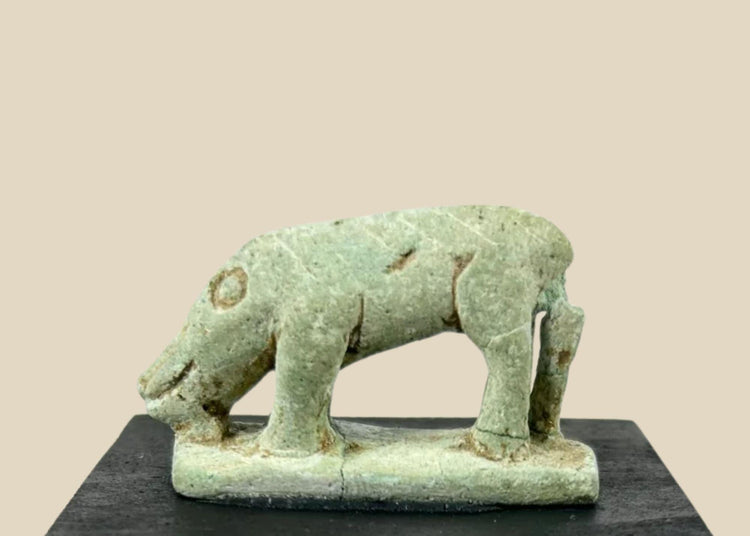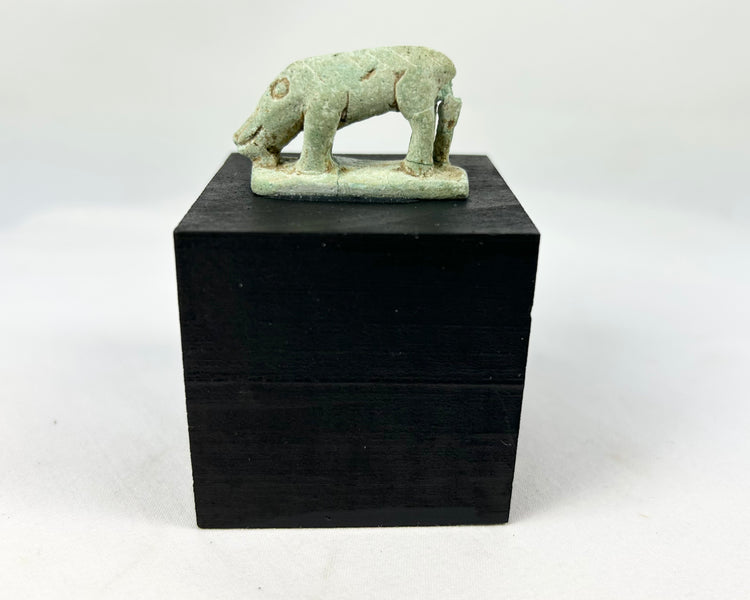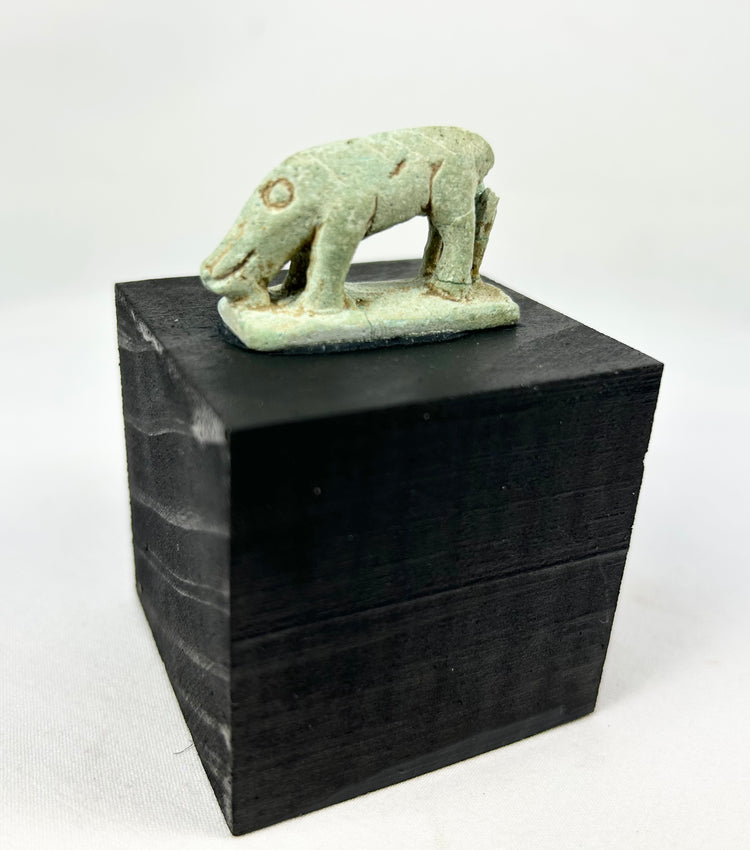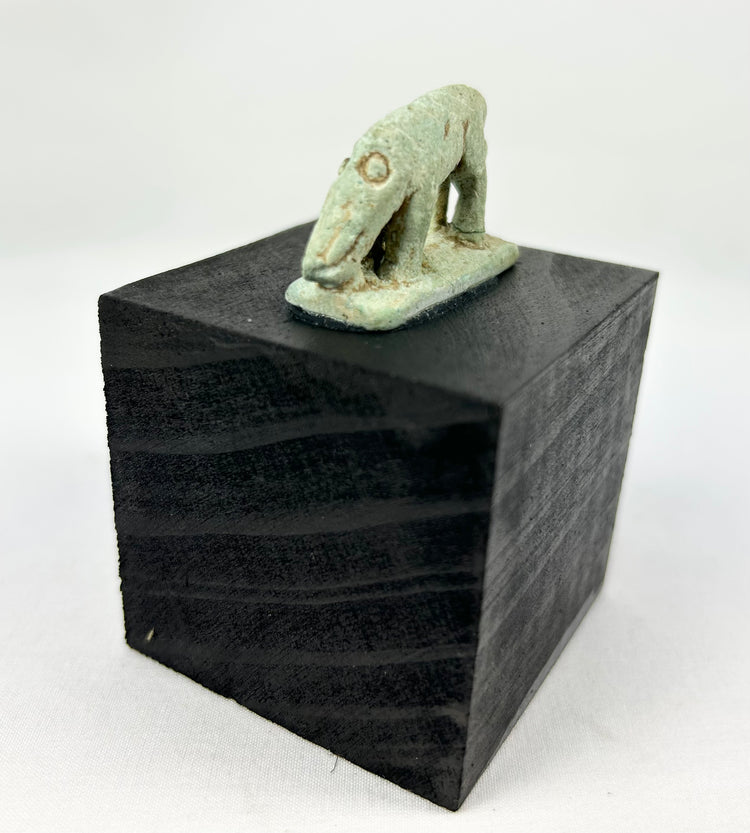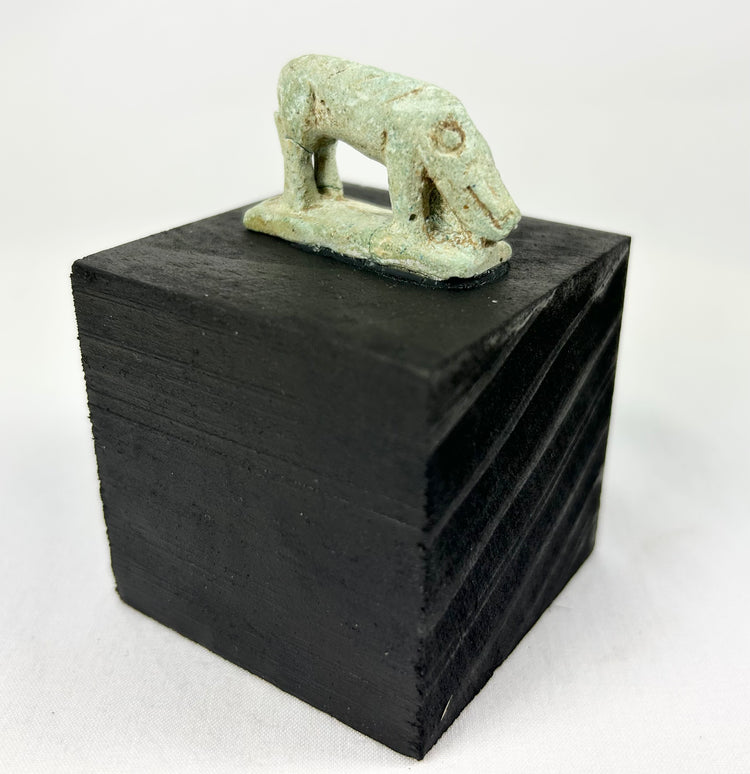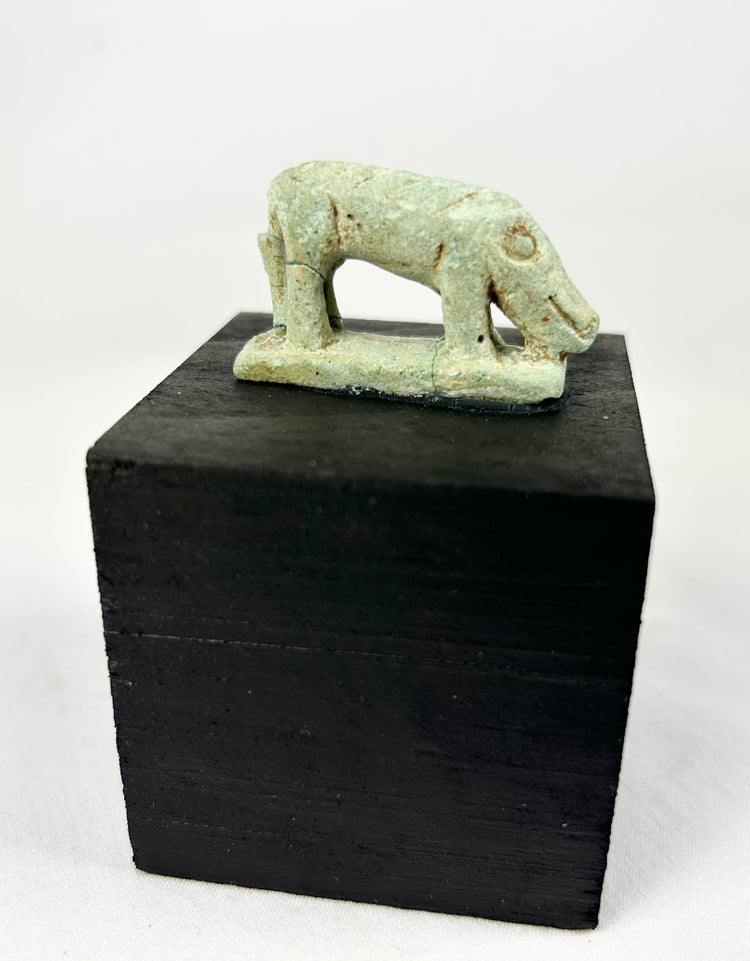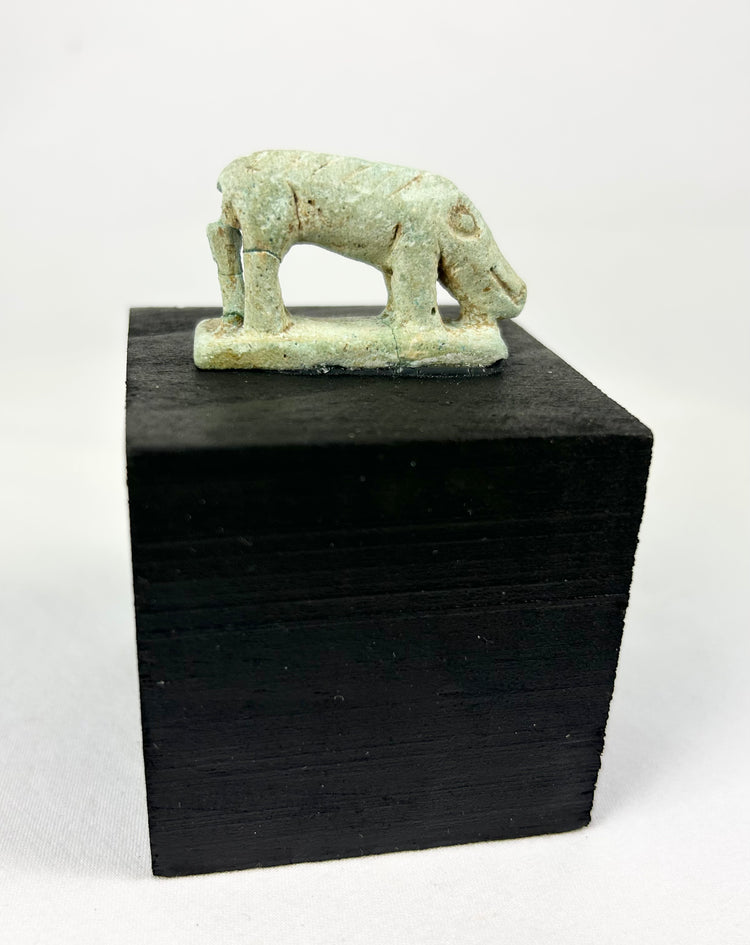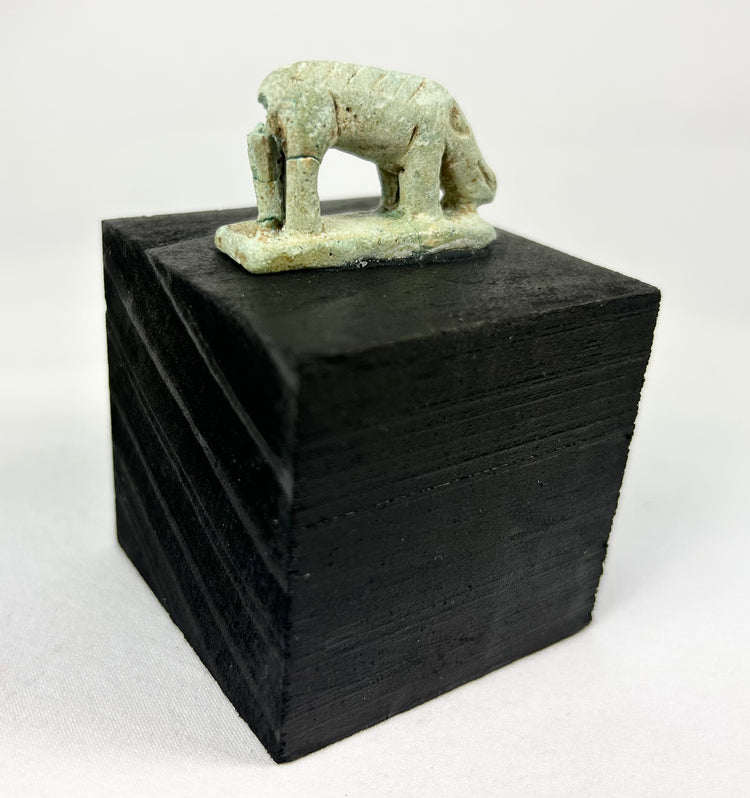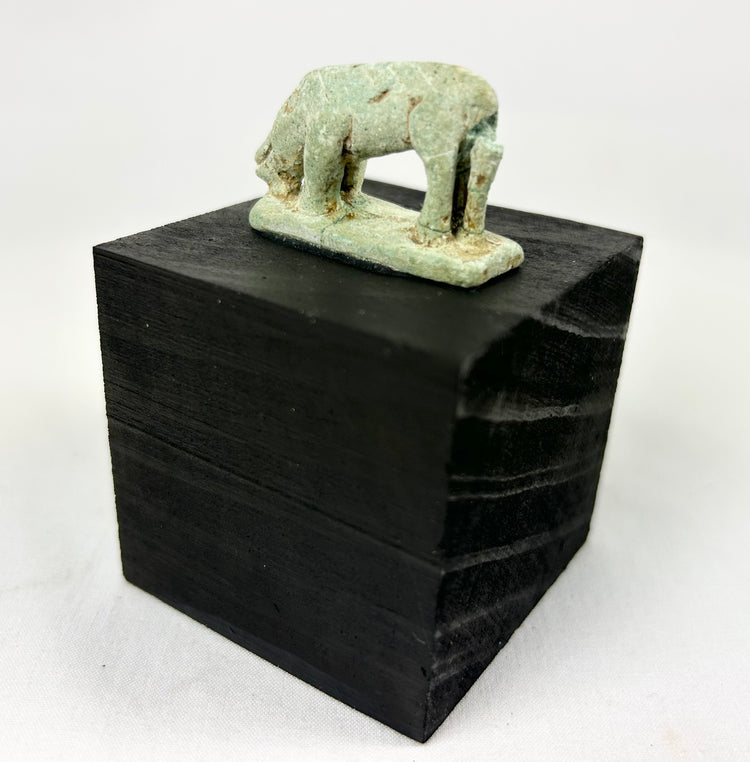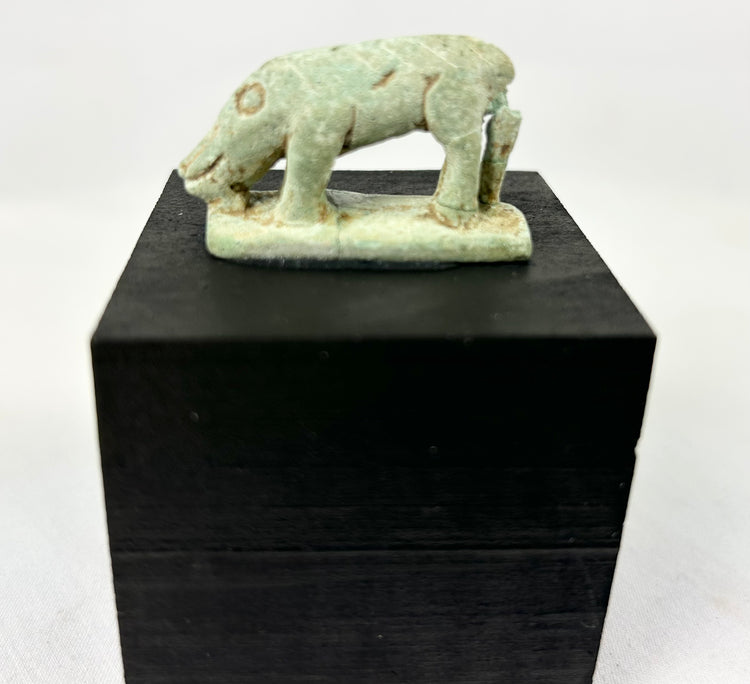Egyptian Faience | Shrew Amulet | Late Period–Ptolemaic | Circa 664–30 BCE)
Description
More
Less
Historical Context & Origin
Region: Ancient Egypt
Material: Pale green faience on an integral plinth; modern wood display block
Period: Late Period–Ptolemaic, ca. 664–30 BCE
Description
Miniature faience amulet of a shrew (often referred to as a “shrew-mouse”), modeled with an elongated, downturned snout, ring-and-dot eye, and four attenuated legs set on a rectangular base. A small dorsal strut behind the hindquarters reinforces the figure, while light incised lines suggest the animal’s coat. Traces of the original green glaze survive with mineral accretions from burial. Presented on a modern black wood stand.
Identification Note
Although sometimes mistaken for “green sow” figures of the sky goddess, the long narrow muzzle, thin legs, and rear strut are defining features of Egyptian shrew amulets. Shrews were venerated in temples (notably at Letopolis) and were associated with the night and protective powers. Faience amulets of this type were worn for personal protection and also deposited as votive offerings.
Features
- Authentic ancient faience with surviving green glaze and burial encrustations
- Classic Late Period/Ptolemaic styling: elongated snout, ring-and-dot eye, rear support strut, rectangular plinth
- Mounted on a custom modern display block
Cultural Significance
In Egyptian religion, shrews were linked to darkness and nighttime, offering protection against unseen dangers. Their presence in temple offerings highlights their role in votive practices, where amulets served as both personal and communal channels of devotion.
Condition
Fair archaeological condition overall: glaze weathering, small chips, surface pitting, and a stable ancient break rejoined through the plinth and legs. No over-restoration; stable and displayable.
Dimensions (approximate)
Length: 1.5 in
Height: 0.75 in
Age
Late Period–Ptolemaic Egypt, ca. 664–30 BCE
Description
Historical Context & Origin
Region: Ancient Egypt
Material: Pale green faience on an integral plinth; modern wood display block
Period: Late Period–Ptolemaic, ca. 664–30 BCE
Description
Miniature faience amulet of a shrew (often referred to as a “shrew-mouse”), modeled with an elongated, downturned snout, ring-and-dot eye, and four attenuated legs set on a rectangular base. A small dorsal strut behind the hindquarters reinforces the figure, while light incised lines suggest the animal’s coat. Traces of the original green glaze survive with mineral accretions from burial. Presented on a modern black wood stand.
Identification Note
Although sometimes mistaken for “green sow” figures of the sky goddess, the long narrow muzzle, thin legs, and rear strut are defining features of Egyptian shrew amulets. Shrews were venerated in temples (notably at Letopolis) and were associated with the night and protective powers. Faience amulets of this type were worn for personal protection and also deposited as votive offerings.
Features
- Authentic ancient faience with surviving green glaze and burial encrustations
- Classic Late Period/Ptolemaic styling: elongated snout, ring-and-dot eye, rear support strut, rectangular plinth
- Mounted on a custom modern display block
Cultural Significance
In Egyptian religion, shrews were linked to darkness and nighttime, offering protection against unseen dangers. Their presence in temple offerings highlights their role in votive practices, where amulets served as both personal and communal channels of devotion.
Condition
Fair archaeological condition overall: glaze weathering, small chips, surface pitting, and a stable ancient break rejoined through the plinth and legs. No over-restoration; stable and displayable.
Dimensions (approximate)
Length: 1.5 in
Height: 0.75 in
Age
Late Period–Ptolemaic Egypt, ca. 664–30 BCE
You May Also Like


























